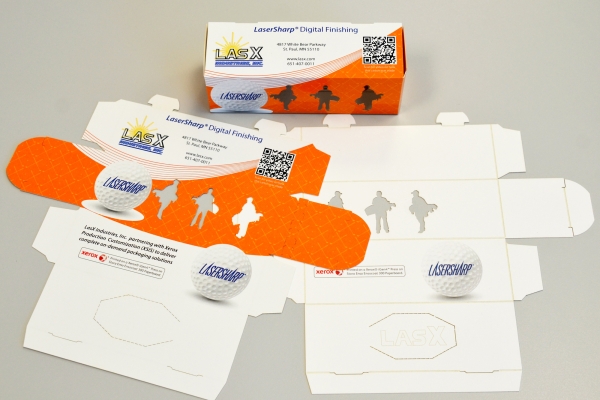Laser Types
CO 2 (standard) .
CO₂ lasers are the most common laser type used to through-cut, kiss-cut, score, etch or perforate substrates. CO₂ laser are best suited for processing non-metallic materials such as plastics, papers, polymers, textiles, foams and adhesives. Lasers are available in 9.4μ, 10.25μ, and 10.6μ wavelengths. Typical power output range is 40W to 1000W. Common applications include 
- Commercial print: greeting cards, folding cartons, brochures, business cards, stencils, and labels
- Flexible packaging: easy-open and breathable packaging features
- Industrial: gaskets and adhesive spacers
- Medical: adhesive and plastic materials for medical components
Fiber (f)
Fiber lasers are ideally suited for ablating thick conductive coatings that would typically slow a UV laser. They are also capable of metal and plastic welding. Lasers are available in 1070nm laser wavelength in pulsed or continuous wave energy outp uts. Typical power output range is 20W to 100W. Common applications include ablating, cutting and welding materials used in electronic and medical markets
How lasers are used in digital converting
Digital converting is a process in which a focused laser beam is directed to cut, kiss-cut, perforate, score or etch patterns into materials as specified in a customer’s vector file. This non-contact functionality achieves extremely tight tolerances (approximately 50μm or 0.002”) while processing materials at high speeds. Digital laser converting is a fast, clean and cost-effective production solution which consistently delivers an exceptional standard of quality – ideal for applications with feature locations, tolerances, size or material characteristics that are typically difficult or impossible to process using traditional metal dies